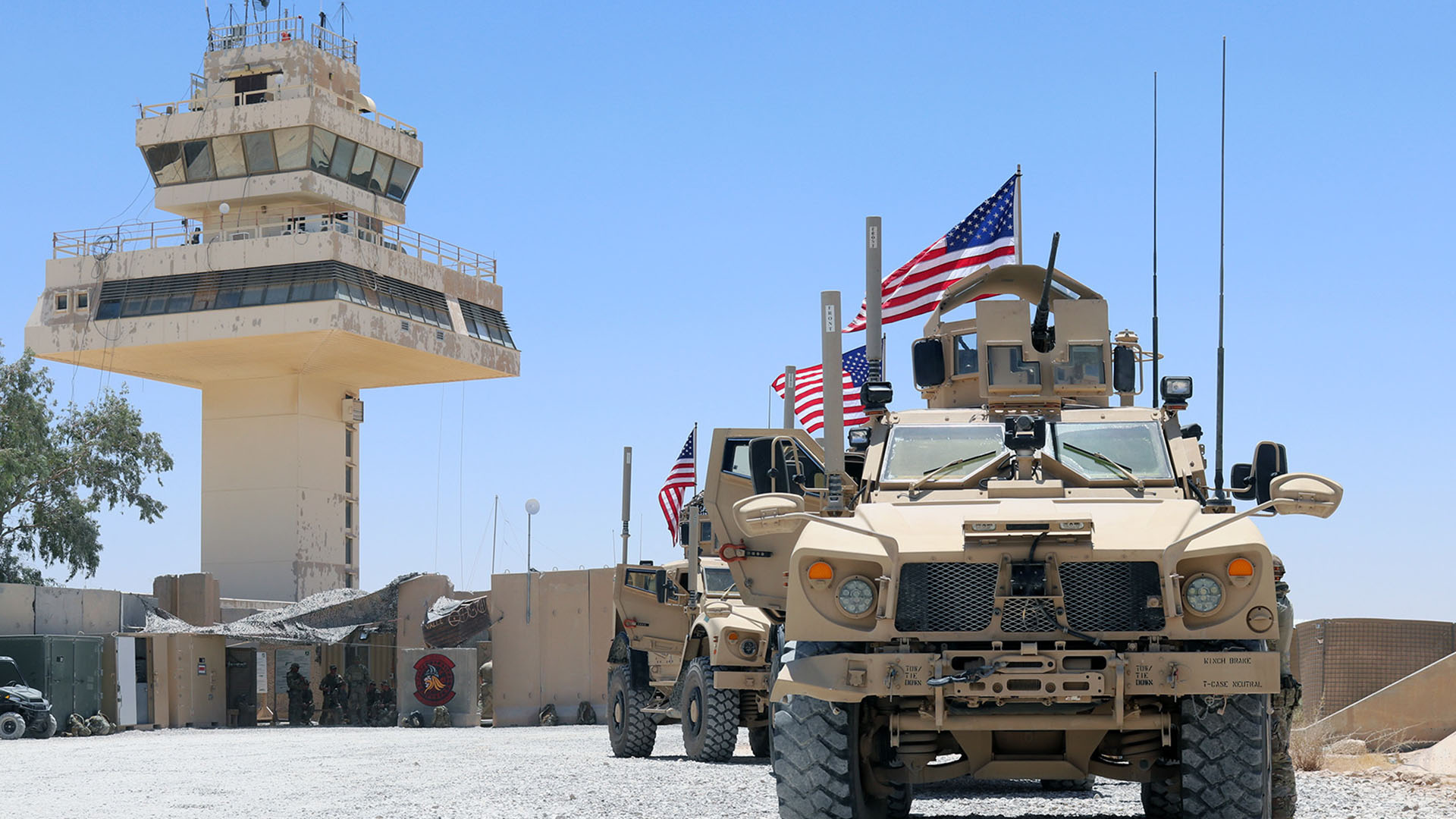

A total of 19 U.S. troops have been diagnosed with Traumatic Brain Injury, or TBI, after drone attacks on their remote bases in Iraq and Syria, according to the Pentagon.
The announcement comes as about the Pentagon confirmed that 900 U.S. troops have either recently deployed or begun to deploy to the Middle East amid ongoing attacks on American forces in the region blamed on Iranian-backed groups.
Politico first reported on Thursday that of the 21 U.S. troops who received minor injuries from drone attacks in Iraq and Syria, 19 were later diagnosed with TBI.
Fifteen of those troops were injured in a drone attack on the Al Tanf garrison in Syria and the remaining four were diagnosed with TBI following a separate attack on Al Asad Air Base in Iraq, said Air Force Brig. Gen. Pat Ryder, a Pentagon spokesman. The attacks took place over Oct. 17 and 18.
Subscribe to Task & Purpose Today. Get the latest military news and culture in your inbox daily.
The attacks on Al Tanf and Al Asad resulted in a total of 21 U.S. service members receiving minor injuries, Ryder told reporters on Thursday. All those service members were returned to duty and no U.S. troops have been injured in subsequent attacks.
Between Oct. 17 and 26, U.S. troops in Iraq and Syria have come under drone and rocket attacks on at least 16 different occasions, Ryder said during a Pentagon news briefing. Twelve of those attacks took place in Iraq, including one in Erbil on Thursday. The other four occurred in Syria.
Ryder declined to answer directly when asked by several reporters on Thursday how the United States might respond to these attacks.
“These attacks are concerning,” Ryder said. “They’re certainly dangerous and our forces are there to conduct the defeat-ISIS mission. So, I would say, we are going to take any necessary measures to protect our troops. But, again, as far as any actions we might take: I’m not going to telegraph that. We would do something at a time and place of our choosing, should we choose to do so.”
U.S. government officials have accused Iran of trying to escalate the war between Israel and Hamas by targeting American troops in the Middle East.
After Hamas launched its Oct. 7 attacks on Israel, the U.S. military announced that it would send more ships, aircraft, and troops to the Middle East to prevent the war from becoming a regional conflict.
So far, about 900 troops have deployed or started the process of deploying to the region, Ryder said.
“These include forces that have been on ‘prepare to deploy’ orders, and which are deploying from the continental United States,” Ryder said. “Deployed and deploying units include a Terminal High Altitude Area Defense battery from Fort Bliss, Texas; Patriot batteries from Fort Sill, Oklahoma; Patriot and Avenger batteries from Fort Liberty, North Carolina; and associated air defense headquarters elements from Fort Bliss and Fort Cavazos, Texas.”
Ryder declined to say exactly where these troops are deploying other than they are not going to Israel. He also did not say exactly how many other American service members have been placed on heightened alert in case they are needed in the Middle East.
The Wall Street Journal recently reported that Israel had agreed to a U.S. government request to delay its ground invasion of the Gaza Strip until more American air defenses could be moved into the Middle East to protect U.S. troops.
Some of the air defense systems being deployed to the Middle East are already online and many others will be ready soon, Ryder said.
Ryder declined to say whether the United States had asked Israel to delay its pending attack on Gaza.
The latest on Task & Purpose
- A guide to every beret worn by American service members
- Army general says moldy barracks are a ‘discipline problem’
- Best of the bad: What was the best C-ration during the Vietnam War?
- How rank and rate works in the Navy
- $1.3 billion in Army spare parts found in ‘critical’ shape, IG reports
